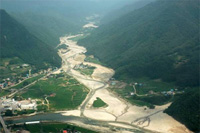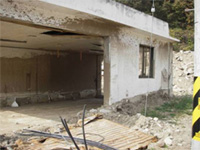Conference
-2006 Oct, Seoul, Korea
| Name/Title | the 5th Japan-Korea Technical Conference on Sediment-Related Disaster Prevention |
|---|---|
| Venue: Country,City | Seoul, The Republic of Korea |
| Date | Oct 19, 2006 |
| Detail | 1. Japan-Korea Technical Conference on Sediment-Related Disaster Prevention On October 19, 2006, the 5th Japan-Korea Technical Conference on Sediment-Related Disaster Prevention between Sabo (Erosion and Sediment Control) Div., Ministry of Land, Infrastructure and Transport, Japan and Korea Forest Service was held in Seoul Metropolitan City, the Republic of Korea. <<Presentation>>
2. Site Inspection <<Sediment Disaster due to Localized Heavy Rain in July 2006>> Owing to continual rain and typhoon from early to mid July, landslides and mudflows occurred in Inje county and Pyongchang county in Kangwon-do, causing a great amount of damage to the downstream area. In Pyongchang county, when it suffered the heavy rain in July, the precipitation reached 793mm and the maximum hourly precipitation was 82mm (during 5 days from July 11 to July 15), whereas its annual average precipitation is 1,200 to 1,500mm.
|


